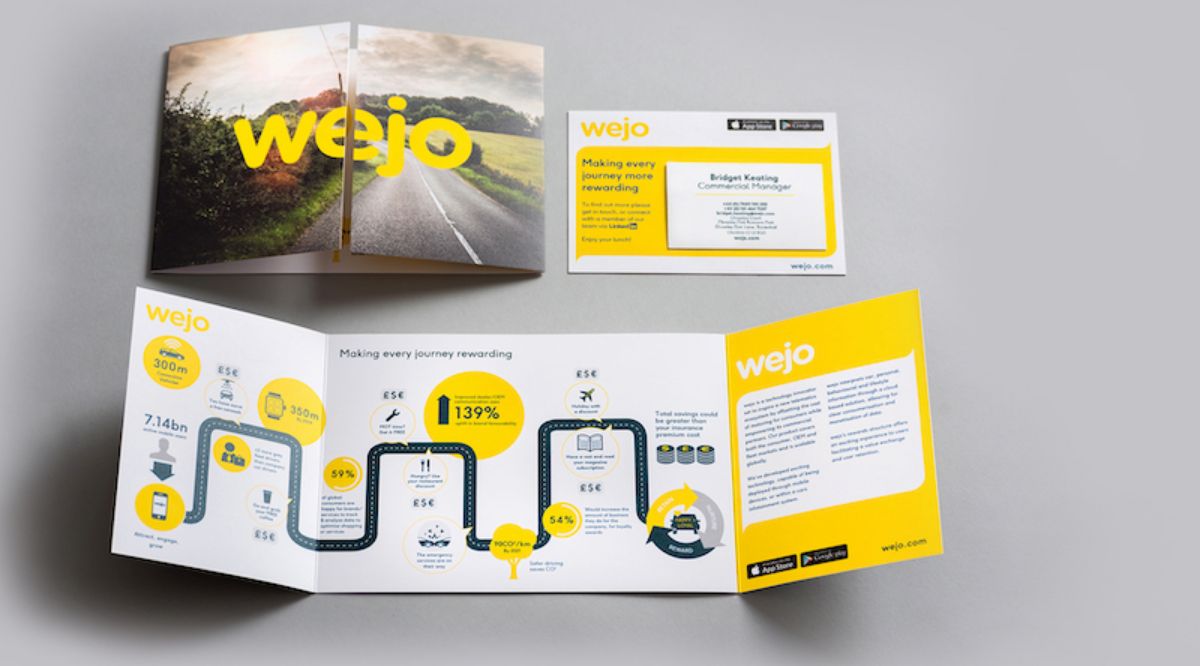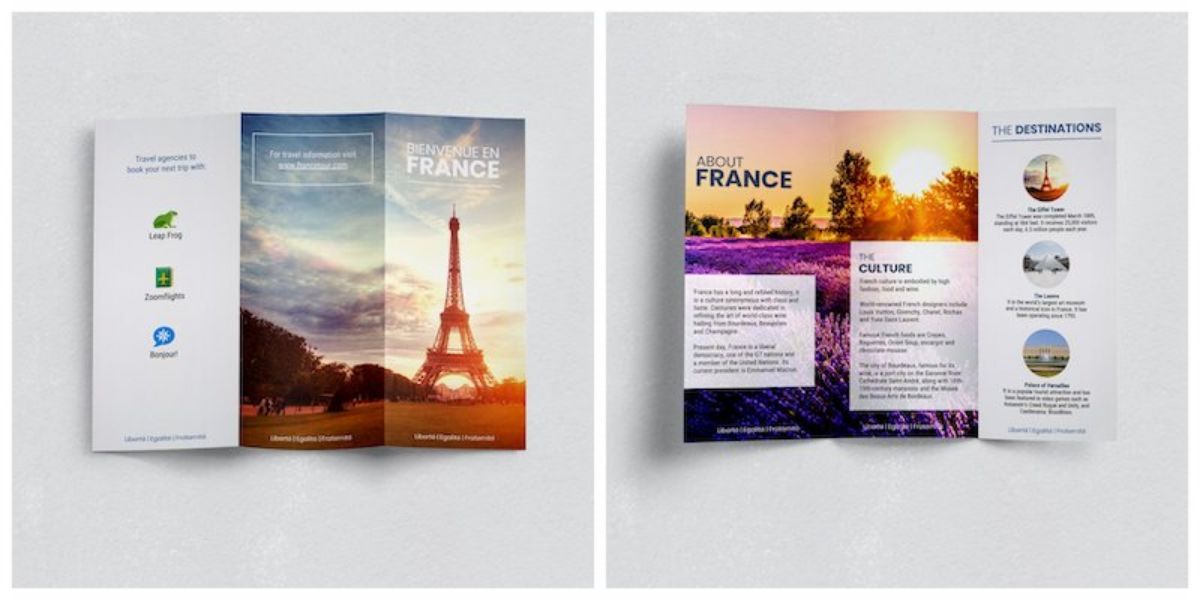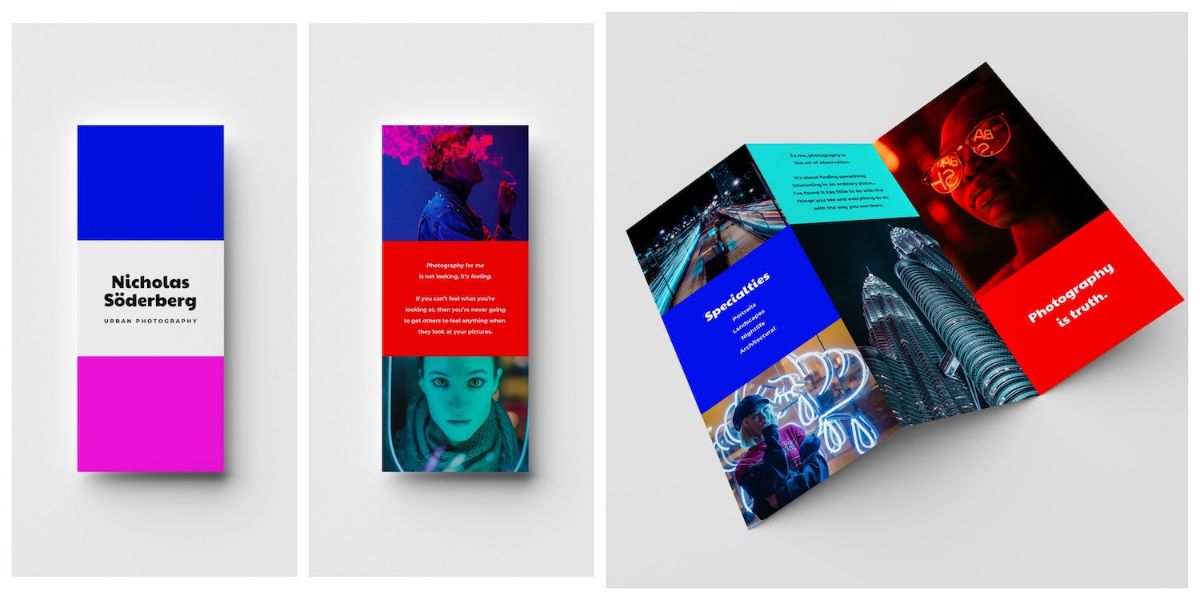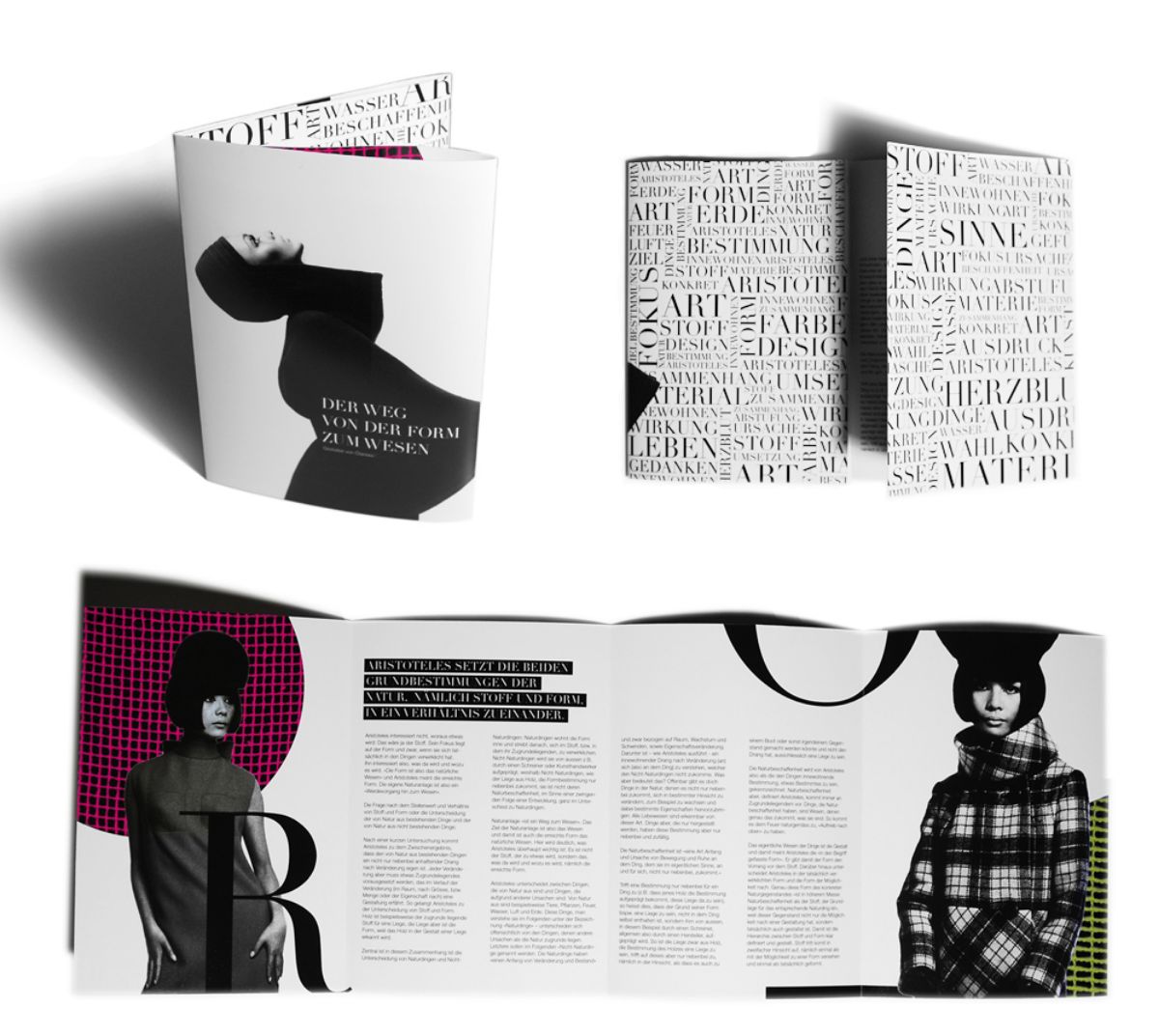
Have you ever had to make a brochure for a client? Or for your business? Have you needed examples of brochures to see which one best suits what you want to achieve with it?
Normally, when we think of a brochure, the same type always comes to mind. But in reality there are many different ones and below we want to give you examples of each of them so that, when doing this work, it will be easier for you to know which one is the most suitable. Prepared?
what are brochures
First of all, the first thing you need to understand is that a brochure is actually a printed text document. However, instead of that text being written in a default way, such as A4 or similar, it is written in a different way.
The objective of these brochures is to be able to be delivered by hand without taking up too much space but having all the necessary information, either about a product, company, service, etc.
Of course, it is not something new, but they have been around for a long time and the truth is that not much has changed. Most of the well-known ones are called triptychs or diptychs, depending on whether they are folded three times or twice respectively. But you should know that there are more types of brochures.
Types and examples of brochures

Source: uzkiaga
Telling you about the types of brochures is not an easy thing because the truth is that they can be divided in various ways.
If we do it according to the number of pages or bodies that the brochure has, we can find:
- Flyers. Also called flying leaves. They are sheets that are not folded and are printed on one or both sides. These are usually in many sizes, from A4, A5, A6, 10x21cm... But the truth is that the only limitation is A4 as the maximum size. It is the simplest and the one you find in magazines, newspapers, etc. as if they were another page. For example, a sheet announcing a discount at Zara that comes to you in Hola magazine.
- Diptychs. As its name suggests, it is a booklet that has been folded in two parts, leaving 4 pages.
- Triptychs. Instead of folding twice, they are made in three and instead of 4 pages you get 6.
- Quadriptych. They are less well known, although you can find examples. They are folded 4 times and you get 8 pages.
- polyptychs. When they fold more than 4 times.
Basically, this would be the best known classification of the types, and where you can find more examples of brochures. But there is another division based on the way of folding. So, you would have:
- Window folding. It is the usual one for quadriptychs, but it does not mean that it cannot be used in others. To give you an idea, having a sheet of paper divided into four parts, if you fold it in half, you would have two parts left on each side. Each of those parts closes with the other thus leaving a kind of window (because when you open it you have two parts that can be reopened).
- in accordion. This is the most suitable when there are many bodies or parts since it takes up less space and all the information that is needed is available. But it can also be used for triptychs and quadruplets. Of course, they must meet a premise and that is that it must be able to open from left to right, or vice versa, and that the information you have is consistent if you only open part or all of it.
- Cross fold. These are the most complicated because you have to distribute the content in a way that, opening only a part, you have adequate information, or opening it in its entirety. An example is the instructions of a device, which you must open from one side and then up.
- In cylinder. The structure must "fold back on itself." A basic example could be the cover of some hardcover books. These have an inner part (the one that covers the book) where you can write something. But also on the lapels, both in front and behind.
- In parallel. It is a variation of the cylinder where, instead of having the faces, each one folded on itself.
- Surround folding. It is similar to the previous one, only that it is used more for triptychs, in such a way that it remains as a card with an extra flap.
Templates of examples of literature
To make this topic much more practical, we have searched for some brochure templates with which we can better explain (and have a visual) of the brochure examples.
Enveloping folded triptych

We start with this tri-fold brochure template that, although it doesn't say so, uses the wrap-around folding system. Why? If you look at the image you will see that there are two sides that interpenetrate and one that does not. When folding, the two sides that have the same design will be the front and back of the brochure, and the third will be the inside sheet.
You can see here.
accordion triptych

The accordion is characterized by a zigzag fold, that is, if you have folded a page to the right, the next should go to the left. Here you can see how it would be. And each page would have its own information.
The downloads here.
Examples of window brochures

This can help us understand what the window style would be like. If you look closely, there is a central part (front) and two sides that would close like a kind of window.
You see it here.
Quadriptych folded in cylinder

If you look at the photo, you will see that it is a type of quadriptych that folds on itself, yes, and that you may think it is a window type, but in reality it has more flaps, as if they were those of a book.
You see it here.
cross leaflet
This time we leave you a video so you can see what a cross brochure would look like.
Parallel Fold Brochure
It would not be a simple parallel, but a double one, for you to see it this video can be a good example.
Is it clearer to you now with the examples of brochures?